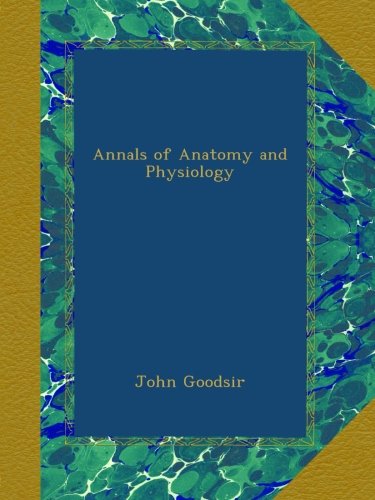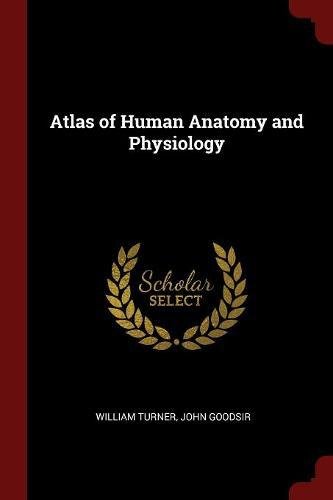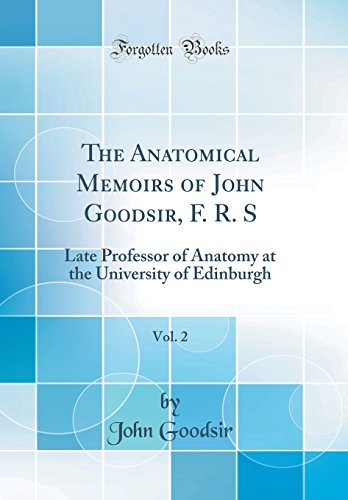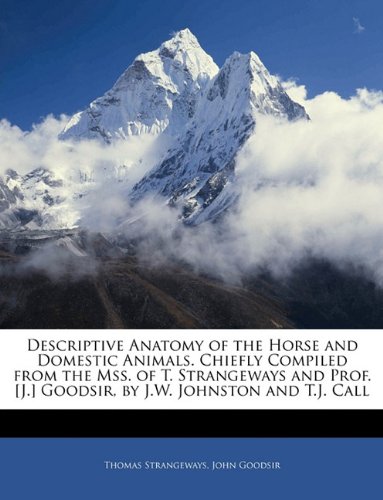Education
University of Edinburgh. University of Street Andrews.



(This book was originally published prior to 1923, and rep...)
This book was originally published prior to 1923, and represents a reproduction of an important historical work, maintaining the same format as the original work. While some publishers have opted to apply OCR (optical character recognition) technology to the process, we believe this leads to sub-optimal results (frequent typographical errors, strange characters and confusing formatting) and does not adequately preserve the historical character of the original artifact. We believe this work is culturally important in its original archival form. While we strive to adequately clean and digitally enhance the original work, there are occasionally instances where imperfections such as blurred or missing pages, poor pictures or errant marks may have been introduced due to either the quality of the original work or the scanning process itself. Despite these occasional imperfections, we have brought it back into print as part of our ongoing global book preservation commitment, providing customers with access to the best possible historical reprints. We appreciate your understanding of these occasional imperfections, and sincerely hope you enjoy seeing the book in a format as close as possible to that intended by the original publisher.
http://www.amazon.com/gp/product/B00B4VI88U/?tag=2022091-20

( This work has been selected by scholars as being cultur...)
This work has been selected by scholars as being culturally important, and is part of the knowledge base of civilization as we know it. This work was reproduced from the original artifact, and remains as true to the original work as possible. Therefore, you will see the original copyright references, library stamps (as most of these works have been housed in our most important libraries around the world), and other notations in the work. This work is in the public domain in the United States of America, and possibly other nations. Within the United States, you may freely copy and distribute this work, as no entity (individual or corporate) has a copyright on the body of the work. As a reproduction of a historical artifact, this work may contain missing or blurred pages, poor pictures, errant marks, etc. Scholars believe, and we concur, that this work is important enough to be preserved, reproduced, and made generally available to the public. We appreciate your support of the preservation process, and thank you for being an important part of keeping this knowledge alive and relevant.
http://www.amazon.com/gp/product/137566994X/?tag=2022091-20

(Excerpt from The Anatomical Memoirs of John Goodsir, F. R...)
Excerpt from The Anatomical Memoirs of John Goodsir, F. R. S, Vol. 2: Late Professor of Anatomy at the University of Edinburgh About the Publisher Forgotten Books publishes hundreds of thousands of rare and classic books. Find more at www.forgottenbooks.com This book is a reproduction of an important historical work. Forgotten Books uses state-of-the-art technology to digitally reconstruct the work, preserving the original format whilst repairing imperfections present in the aged copy. In rare cases, an imperfection in the original, such as a blemish or missing page, may be replicated in our edition. We do, however, repair the vast majority of imperfections successfully; any imperfections that remain are intentionally left to preserve the state of such historical works.
http://www.amazon.com/gp/product/0484851101/?tag=2022091-20

(This is an EXACT reproduction of a book published before ...)
This is an EXACT reproduction of a book published before 1923. This IS NOT an OCR'd book with strange characters, introduced typographical errors, and jumbled words. This book may have occasional imperfections such as missing or blurred pages, poor pictures, errant marks, etc. that were either part of the original artifact, or were introduced by the scanning process. We believe this work is culturally important, and despite the imperfections, have elected to bring it back into print as part of our continuing commitment to the preservation of printed works worldwide. We appreciate your understanding of the imperfections in the preservation process, and hope you enjoy this valuable book.
http://www.amazon.com/gp/product/1145904351/?tag=2022091-20
anatomist physician university professor
University of Edinburgh. University of Street Andrews.
He was a pioneer in the study of the cell. Goodsir was trained in Street Andrews and Edinburgh. In Edinburgh, he served an apprenticeship in dentistry.
He then moved back to Anstruther where he wrote his noted essay on "Teeth".
In 1840 he was appointed Conservator of the Museum of the Royal College of Surgeons of Edinburgh in succession to the great William McGillivray, and lecturer on Diseases of Bone in 1842. Four years later, Goodsir succeeded Doctor Alexander Monro (tertius) (1773–1859) in the chair of Anatomy in Edinburgh University.
In subsequent years, Goodsir supervised many brilliant medical students, including Thomas Clouston, James Bell Pettigrew and William Turner. At this time, anatomy had fallen into low regard, thanks to the "Burke and Hare" scandal (1828) in which the great scientific anatomist Robert Knox (1791–1862) had been pilloried by the Edinburgh medical establishment.
And to the scientific incompetence of the lamentable Alexander Monro (tertius).
Goodsir"s outstanding anatomical teaching and his extensive research activities (published together as his Anatomical Memoirs, edited by Sir William Turner in 1868) did much to restore prestige to Edinburgh"s anatomical traditions. The Anatomical Memoirs also contain a biography by Henry Lonsdale. Goodsir is buried alongside one of the central paths in Dean Cemetery, Edinburgh next to Edward Forbes the naturalist.
This article incorporates text from a publication now in the public domain: Wood, James, educated
(1907). "article name needed". The Nuttall Encyclopædia.
London and New York: Frederick Warne. An obituary appeared in the British Journal of Dental Science.
lieutenant was about this time (1841–1842) that Goodsir developed his revolutionary lectures on the importance of cellular life and organisation. This innovative approach later won the extravagant praise of Rudolf Virchow (1821–1902), who dedicated his masterpiece Cellular Pathology to Goodsir.
(This book was originally published prior to 1923, and rep...)
( This work has been selected by scholars as being cultur...)
(This is an EXACT reproduction of a book published before ...)
(Excerpt from The Anatomical Memoirs of John Goodsir, F. R...)
Royal Society.
